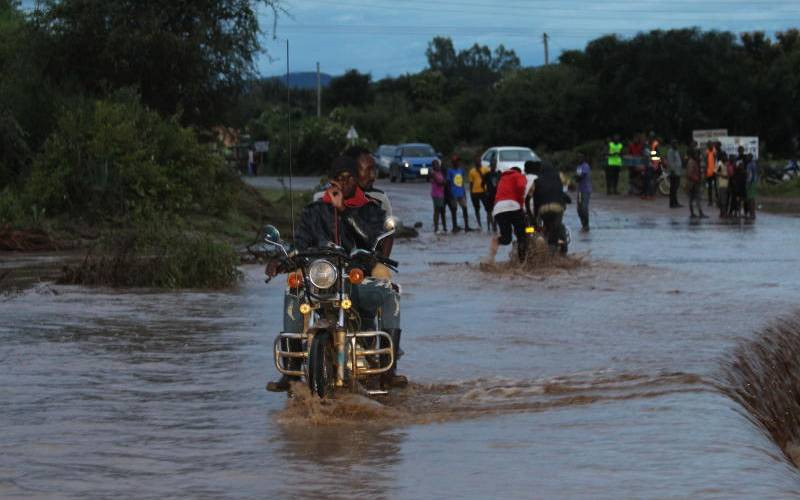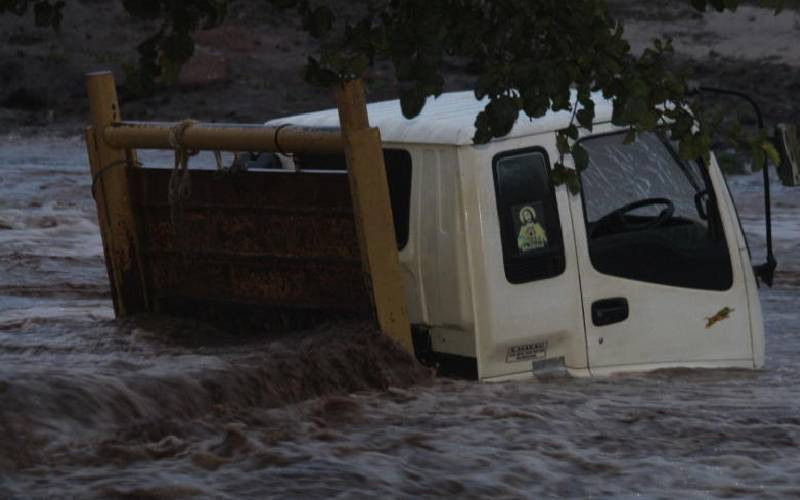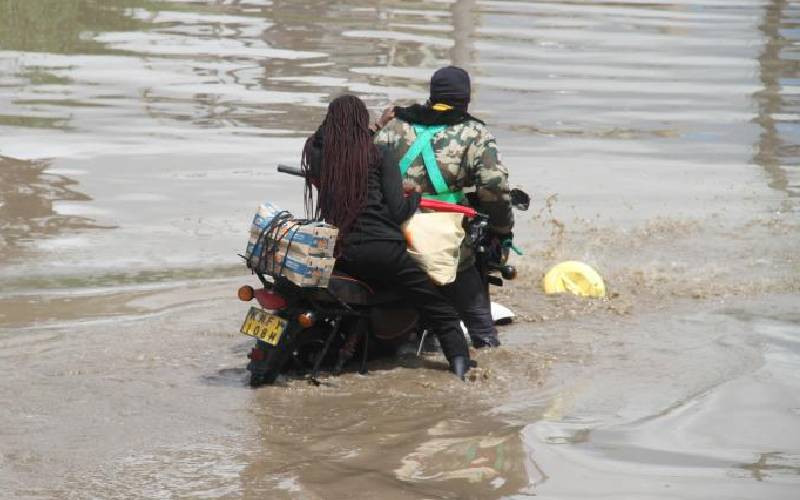
Deaths and economic losses due to the ongoing flooding across the country is worsening as authorities begin to scramble for solutions to minimise damage.
The government yesterday indicated that 70 people have lost their lives due to the flooding.
A brief issued by Deputy President Rigathi Gachagua after a meeting with the National Emergency Response Committee and development partners at his residence in Karen said those directly affected stand at 131,000 households.
According to the Kenya Red Cross Society, the number of households displaced increased to 14,275 from 13,368 reported on Thursday.
By last evening, at least 18 people had been confirmed dead in Nairobi while other deaths have been reported elsewhere.
So dire is the situation that a number of roads and bridges have been rendered impassable, worsening rescue efforts for families trapped in marooned homes in a number of regions.
“About 14,000 households have been affected by the floods and 70 per cent are from Mathare area. That means about 60,000 people have been directly affected by the floods,” said Nairobi Chief Officer for Disaster Management Bramwel Simiyu.
He said only nine bodies have been identified from those retrieved from the hotspots, among them Mathare valley.
In other parts of Nairobi many homes and businesses have been submerged in water, leaving a trail of losses.
Some of the most affected areas include Mukuru kwa Njenga, Fuata Nyayo, Land Mawe, Mukuru Kayaba, Mathare, Njiru, and some areas of Ruai.
A press briefing that was called by Government spokesperson Isaack Mwaura yesterday to communicate updates on the rainfall and flooding situation was cancelled.
In Machakos County, the road between Tala and Donyo Sabuk in Matungulu was impassable following heavy rains.
Motorists and especially public service vehicles discontinued operations on the route after a section of the road was washed away by floods.
Passengers were forced to spend the night in the vehicles, while others walked long distances in the mud to reach their destinations.
The worst hit area was between Maendeleo and Kitini markets, where a section of the road is completely cut off by the floods.
Yesterday, the death toll attributed to floods in Embu reached five even as another person was confirmed dead in Naivasha after a mining site collapsed. Speaking during tree planting at Camp Ndunda in Njukiri East Forest, County Commissioner Jack Obuor said the number of drowning cases reported since the onset of rains had reached five.

Obuor warned residents of Kamaradi in Evurori, Mbeere North to remain vigilant as River Thura is causing a back-flowing effect at the point it joins the Tana river.
In the flood-prone Budalang’i region in Western, scores of families have been displaced after their homes were destroyed.
Budalang’i, a region nestled between the relentless currents of River Nzoia and the vast expanse of Lake Victoria, is grappling with a recurring battle against nature’s fury.
At least 10 primary schools, six villages including prominent community hubs like Mau Mau Market, and essential facilities such as dispensaries such as Rukala, Makhoma, and Sigomere are submerged, leaving locals on edge and communities displaced.
“Every time it pours, it’s the same story of us getting evicted to higher grounds by the flood waters. The dykes worked for some time but things look worse with the water backflow from Lake Victoria,” said Washington Obote, who is living in a tent in Molomba village.
“We try to prepare, but the floods always catch us off guard.”
Two years ago when a similar fate hit the area, Musoma Primary which is a stone’s throw from the waters of River Nzoia lost at least 200 pupils remaining with just 400.
Accessing health services has become a tall order for residents. For instance, to access the next medical facility Port Victoria Hospital, residents have to travel about 27 kilometres mostly wading through flood waters.
Flora Oundo and Robert Odero who are also living at the Malombe camp where the Red Cross donated a handful of tents for them to camp in say it has been a harrowing two months’ as the floods keep soaring.
Of concern is the sanitation situation at the camp as hundreds of communal latrines have been damaged, putting people at risk of infectious diseases, including cholera.
“There is no privacy in the camp which is quickly turning into a health hazard as people keep displaced by the waters and coming. Our children lack food, blankets and mosquito nets,” said Oudo.

In Kirinyaga, Governor Anne Waiguru has activated emergency disaster response interventions to deal with floods and other emergencies arising from heavy rains in the County.
Waiguru further asked people living near Thiba Dam and areas downstream to remain alert because the water reservoir is filling up quickly.
“This week alone, we have rescued some families displaced by floods in Mwea after River Thiba burst its banks, we have found them a temporally place to stay in schools,” Waiguru added.
In Nyanza, a number of roads have been destroyed while at least 2,000 residents have been displaced after their homes were destroyed.
In North Rift region, there were fears of impassable access roads in rural Uasin Gishu following the heavy downpour that started earlier this week.
But as this happens, authorities are engaging in blame games over the failure to prepare citizens for what is rapidly developing into a national disaster. Lands Cabinet Secretary Alice Wahome blamed the ongoing floods on poor and non-adherence to physical planning.
Speaking in Nakuru during a workshop to review national land policy, Wahome said that the matter requires concerted efforts from State and non-state actors to resolve.
“Flooding has affected many cities around the world including Nairobi. It is a natural occurrence but as humans, we have contributed to it,” said Wahome.
[Muriithi Mugo, Kennedy Gachuhi, Victor Nzuma, Kipkemoi Ngeno, Antony Gitonga, Robert Amalemba, Jane Mugambi, Irrisheel Shanzu, Martin Ndiema and Stephen Rutto]